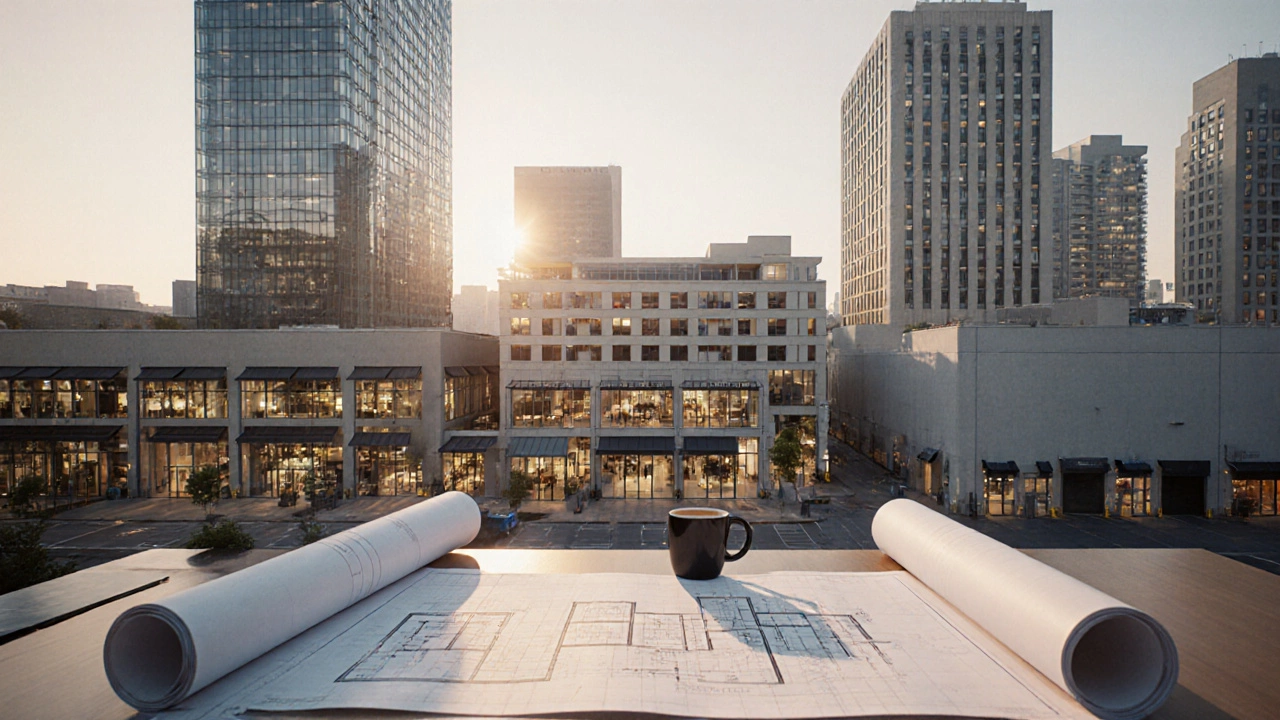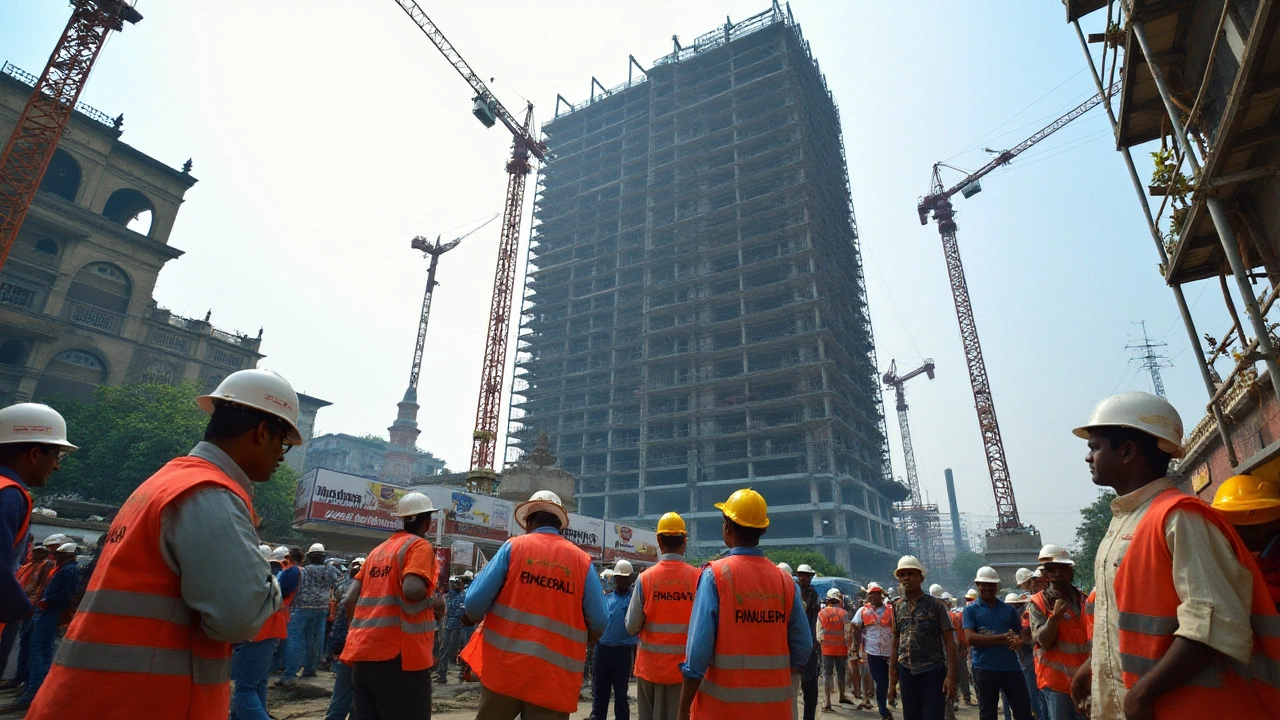What Is Considered Commercial Construction? Definition, Types & Real‑World Examples

Commercial Construction Classification Tool
Project Classification Tool
Determine if your construction project qualifies as commercial based on the primary use of space and percentage of floor area.
When talking about construction projects, commercial construction is the segment that involves building structures intended for business activities such as offices, retail stores, hotels, and warehouses. Most people assume any building that looks big must be "commercial", but the reality is far more nuanced. Knowing exactly what counts as commercial helps architects draw the right plans, contractors price the job correctly, and owners secure the proper permits.
Key Takeaways
- Commercial construction covers any building primarily used for profit‑generating activities.
- Typical categories include office, retail, hospitality, warehouse, and mixed‑use projects.
- Distinct regulations-building code, planning permission, and fire safety-apply compared with residential work.
- Understanding the classification influences budgeting, insurance, and financing.
- Mixed‑use developments blur lines but are still classified as commercial if the dominant use is business‑oriented.
How Construction Classifications Are Organized
In the UK, the Construction Industry Council and government bodies use a hierarchy that splits projects into four main buckets:
- Residential construction - houses, apartments, and other dwellings.
- Commercial construction - buildings meant for business.
- Industrial construction - factories, plants, and large‑scale processing facilities.
- Institutional construction - schools, hospitals, and government complexes.
Each bucket follows its own set of standards, from fire‑rating requirements to accessibility guidelines. The biggest impact on your project is the classification you land on-mis‑classifying can lead to costly redesigns or denied permits.
Core Types of Commercial Construction
Below is a quick rundown of the most common commercial building types and what makes them distinct.
| Category | Primary Use | Typical Size (sq ft) | Key Regulations |
|---|---|---|---|
| Office | Business administration, professional services | 10,000‑200,000 | Part B of the Building Regulations, fire‑compartmentalisation |
| Retail | Shops, shopping centres, showrooms | 5,000‑150,000 | Disability Access, public‑space safety |
| Hospitality | Hotels, motels, serviced apartments | 20,000‑300,000 | Fire‑resistance, sanitation, gas safety |
| Warehouse/Logistics | Storage, distribution, light manufacturing | 30,000‑500,000 | Floor loading, fire‑exits, loading‑bay standards |
| Mixed‑Use | Combination of office, retail, residential, or hotel | Varies widely | Hybrid compliance; dominant use drives code |

Real‑World Examples to Illustrate the Definition
Seeing the definition in action helps cement the idea. Here are three projects you might recognise:
- Manchester Central Exchange - a refurbished office tower that houses multiple corporate tenants. Its primary function is to provide workspace, so it falls squarely under commercial construction.
- Trafford Retail Park - a cluster of big‑box stores and restaurants. Even though the site includes a small car‑park residence for staff, the dominant use is retail, making it commercial.
- Deansgate Mixed‑Use Development - this project blends ground‑floor shops, upper‑level apartments, and a boutique hotel. Because the combined floor‑area for business activities exceeds the residential portion, planners class the whole scheme as commercial.
Notice how each example aligns with the categories from the table above. The classification isn’t about size alone; it’s about the building’s primary economic purpose.
Why Classification Matters: Permits, Financing & Insurance
Getting the label right isn’t just academic. It has tangible effects on three crucial fronts.
- Planning Permission - Local authorities use the classification to decide whether a project meets the local development plan. Commercial schemes often need a more detailed planning permission application, including traffic impact studies and environmental assessments.
- Construction Contract - The standard form of contract (e.g., JCT Design & Build) varies depending on risk allocation for commercial vs residential work. Commercial contracts usually include clauses for early completion bonuses and stricter penalties for delays, reflecting the higher revenue stakes.
- Insurance Premiums - Because commercial buildings host more occupants and higher-value assets, insurers assess greater risk. Proper classification ensures you get the correct coverage without unnecessary cost overruns.
Common Pitfalls When Defining a Commercial Project
Even seasoned developers stumble into classification traps. Avoid these costly mistakes:
- Assuming Mixed‑Use Is Automatically Residential - If the non‑residential portion occupies more than 50 % of the floor‑area, the whole development is treated as commercial.
- Overlooking Building Code Specifics - Commercial projects must meet Part B (fire safety) and Part M (access) in more detail than homes. Skipping a fire‑compartment analysis can halt construction.
- Mixing Contracts - Applying a residential‑style contract to a commercial build can leave you exposed to change‑order disputes. Align the contract type with the classification from day one.

Step‑by‑Step Guide to Classify Your Project
If you’re unsure where your build falls, follow this quick checklist. The process mirrors what planners and lenders expect.
- Identify the primary use of each floor - office, retail, hotel, etc.
- Calculate the total square footage for each use.
- Determine the percentage share of the dominant use.
- If > 50 % → classify as that use (e.g., commercial office).
- If exactly 50 % → the project is considered mixed‑use; apply the stricter of the two categories.
- Cross‑check with local authority guidelines - they may have lower thresholds for certain zones.
- Confirm the classification with your architect and solicitor before submitting the planning application.
Running through these steps early saves time, money, and headaches later.
Future Trends Shaping Commercial Construction Classification
Regulation is not static. Emerging trends are already nudging the definition of commercial:
- Co‑working Spaces - As flexible offices blend with amenities like gyms and cafés, many developers label the whole building "commercial" even though a portion serves as public leisure space.
- Green Building Standards - BREEAM and LEED certifications now include specific criteria for commercial sustainability, making eco‑performance a classification factor.
- Digital Twins & BIM - Building Information Modelling helps owners simulate occupancy scenarios, clarifying the dominant use before any hard construction begins.
Staying ahead of these shifts ensures your project remains compliant throughout its lifecycle.
Frequently Asked Questions
What distinguishes commercial construction from residential?
Commercial construction is defined by the building’s primary economic purpose - typically profit‑making activities like offices, retail, hospitality, or warehouses. Residential projects are intended for private living spaces. The distinction influences building codes, fire safety requirements, and planning permissions.
Can a mixed‑use development be classified as commercial?
Yes. If more than half of the total floor area serves a business function, the whole scheme is treated as commercial. Even when the residential portion is sizable, planners apply the stricter commercial standards.
Do construction contracts differ between commercial and residential projects?
Commercial contracts usually contain tighter timelines, performance guarantees, and detailed risk‑allocation clauses because the financial stakes are higher. Residential contracts are often simpler and focus more on quality assurance and defect liability.
What building codes are most relevant for commercial construction in the UK?
Key parts of the Building Regulations include Part B (fire safety), Part M (access and facilities for disabled people), and Part L (energy efficiency). Commercial projects also often need to meet specific fire‑engineering and structural‑integrity standards beyond the basic residential requirements.
How does planning permission differ for commercial projects?
Local councils evaluate factors like traffic impact, employment creation, and compatibility with surrounding land use. Commercial proposals typically require a full planning application with design and access statements, whereas many residential extensions can be dealt with through a simpler “permitted development” route.
Understanding what qualifies as commercial construction empowers you to choose the right professionals, budget accurately, and avoid regulatory surprises. Whether you’re planning a sleek new office block in Manchester or a mixed‑use tower in Leeds, getting the classification right at the outset paves the way for a smoother build.


